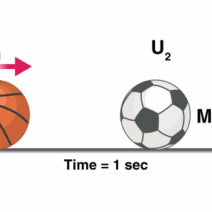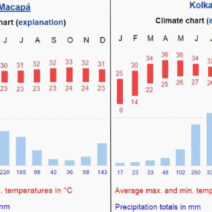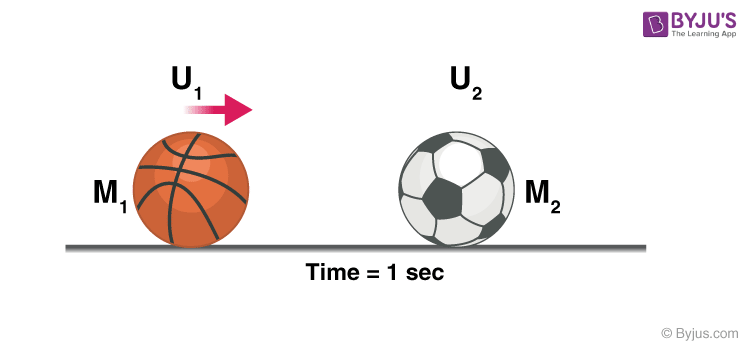The concept of conservation of energy is fundamental to the understanding of physical processes that govern our universe. Just as water flows downhill seeking its own level, energy traverses various forms while maintaining its overall quantity. This brings us to a pivotal inquiry: does conservation of energy encompass the phenomenon of momentum? To unravel this enigma, one must first delineate these two formidable forces: energy and momentum.
Energy, primarily classified as kinetic or potential, embodies the capacity to perform work or induce change. Kinetic energy manifests in the movement of objects, analogous to a river racing down a mountainside, while potential energy resembles a boulder poised precariously at the edge of a cliff, brimming with the potential to plummet.
On the other hand, momentum is the product of an object’s mass and its velocity, functioning as a measure of its motion. It can be visualized as a juggernaut hurtling down a highway; the more substantial the vehicle and the faster it travels, the more momentum it possesses. The law of conservation of momentum asserts that in a closed system, the total momentum remains constant, regardless of the collisions and interactions that may transpire within that system.
Although energy and momentum are intimately linked in the tapestry of physics, it is crucial to recognize their distinct roles. While energy can take on myriad forms, momentum specifically pertains to objects in motion. They are like two sides of the same coin; one cannot discuss the trajectory of a moving object without considering both its energy and momentum.
To delve deeper, imagine a futuristic city where vehicles glide seamlessly through the air. As they maneuver through the skyline, the intricate dance between energy and momentum becomes palpable. A vehicle charging up an incline may experience a temporary increase in potential energy, yet its momentum diminishes as the velocity decreases. Conversely, an aircraft soaring at high altitude possesses substantial kinetic energy and momentum but may need to convert that energy efficiently for landing.
But what happens when these two principles intersect? The collision of two objects illuminates the interaction between energy and momentum unmistakably. When a moving vehicle collides with a stationary object, the total momentum of the system—vehicles and surroundings—remains unchanged, adhering to the legendary law of conservation of momentum. However, energy transformation occurs: kinetic energy dissipates, often converted into heat, sound, or deformation—akin to a rubber band snapping, releasing energy in all directions.
Numerous paradigms exist that depict the relationship between energy and momentum. Inelastic collisions, where objects stick together post-impact, highlight the transfer and conservation of momentum. The energy, however, is not conserved in the same manner; some kinetic energy ceases to exist in mechanical form due to conversion into heat or other non-recoverable energy types. This is strikingly reminiscent of a candle as it burns; while the wax may diminish, the light it emits conveys energy in a transformed state—much like momentum during an impact.
In contrast, elastic collisions maintain both energy and momentum, much like two perfectly tuned musical instruments that resonate effortlessly when struck. When they collide, not only do they rebound with no energy lost, but they also exchange momentum seamlessly, akin to dancers elegantly passing each other on a stage.
These dynamics emphasize the imperative that momentum conservation operates under a different premise than that of energy. Energy conservation asserts that the total energy within a closed system remains constant, even while the energy’s form may alter—a fundamental principle echoing through various disciplines, from thermodynamics to ecology.
In the realm of environmental science, understanding momentum and energy conservation becomes crucial. Just as the universe abides by these principles, human sustainability relies on recognizing the limitations of resources. The exponential growth of humankind’s energy consumption resembles a rocket’s ascent, relying on powerful momentum to break free from the gravitational bonds of Earth. However, if that momentum is not managed prudently, it could lead to cataclysmic consequences—akin to a chemical reaction spiraling out of control.
Moreover, this discussion invites deeper contemplation on how we can harness both energy and momentum effectively in our quest for sustainability. The inherent beauty of wind or solar energy lies not just in harnessing the energy itself but in understanding the momentum built into these renewable resources. Tidal forces and wind currents exhibit momentum that we can capture for energy production; when we respect the interplay between these forces, we venture closer toward sustainability. The collaborative dance between energy and momentum can inspire innovative technologies and practices that promote a greener future.
In conclusion, the intricacies of conservation of energy and momentum reflect a profound and intertwined relationship, albeit distinct in governing principles. While energy dabbles in a myriad of forms, momentum remains steadfast in its definition—a testament to the unyielding laws of physics. This knowledge is not merely academic; it serves as a vital beacon guiding humanity toward sustainable practices and a comprehensive understanding of the universe we inhabit. As stewards of Earth, grasping these concepts enables us to navigate our energy consumption and momentum-driven growth sensibly, ensuring a viable legacy for future generations.






